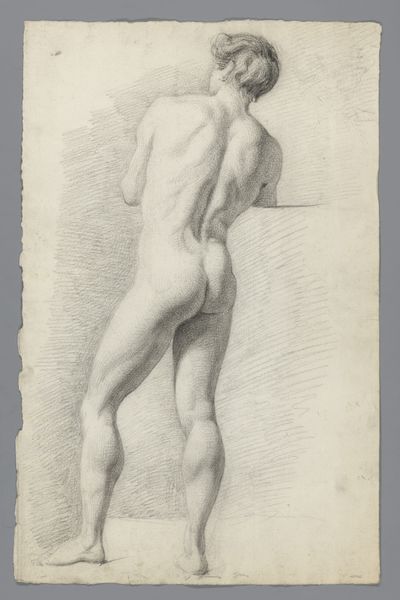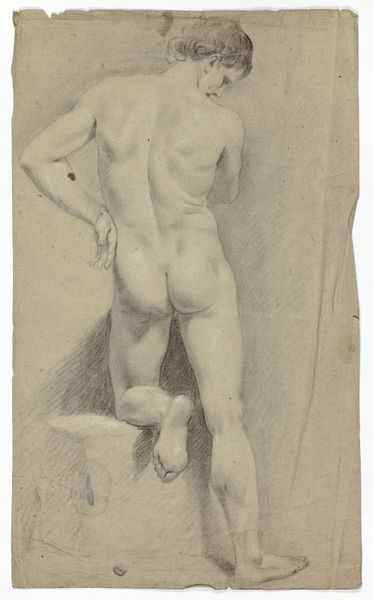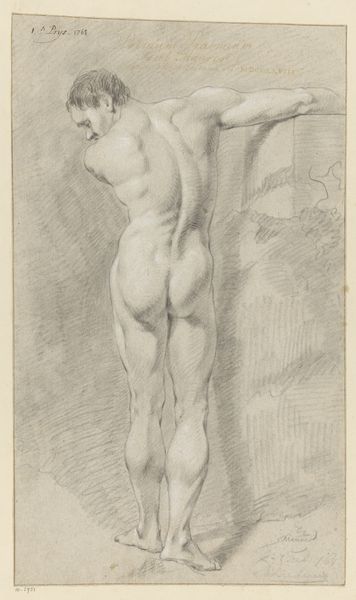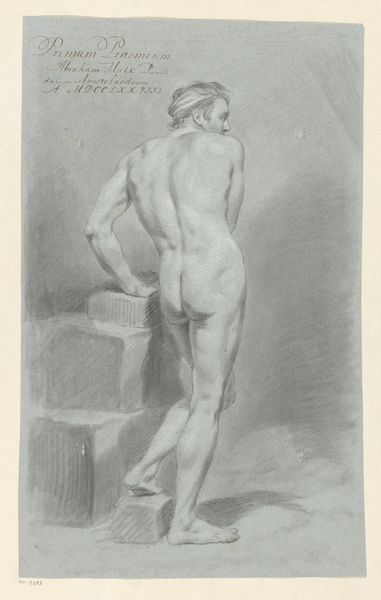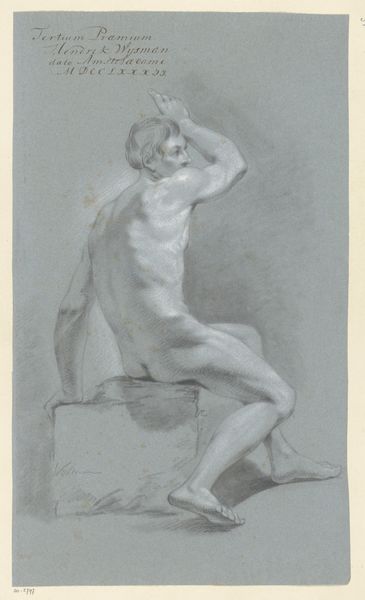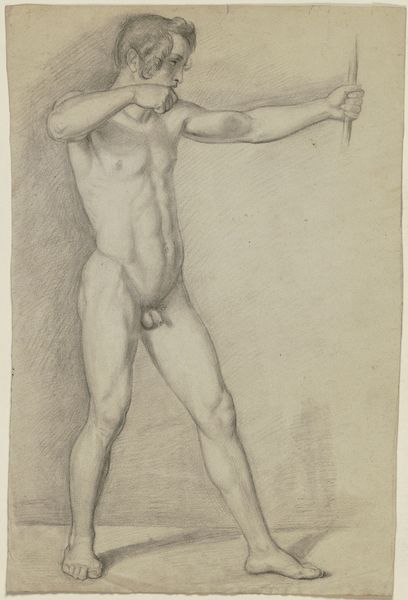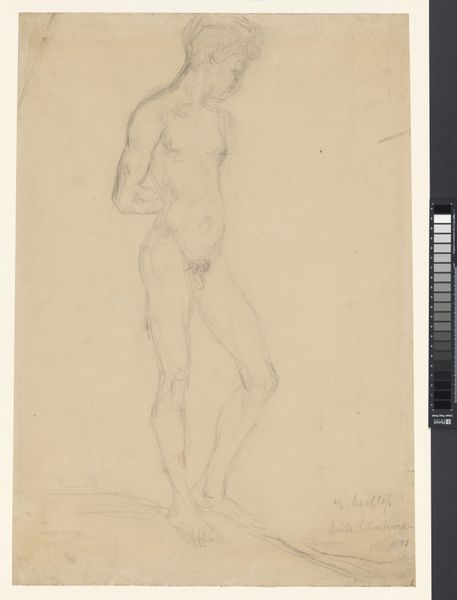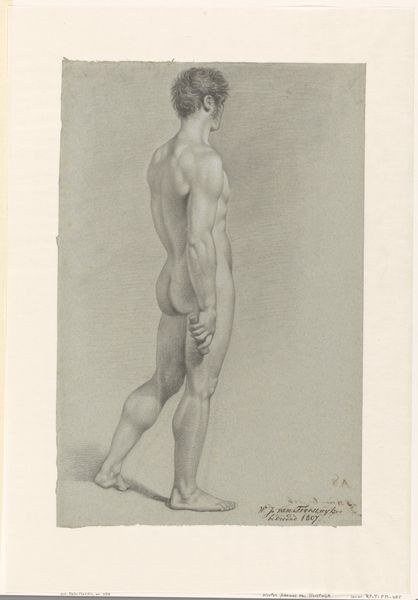
drawing, pencil
#
pencil drawn
#
drawing
#
amateur sketch
#
aged paper
#
toned paper
#
light pencil work
#
pencil sketch
#
figuration
#
personal sketchbook
#
pencil
#
sketchbook drawing
#
pencil work
#
academic-art
#
nude
#
sketchbook art
#
realism
Dimensions: height 432 mm, width 271 mm
Copyright: Rijks Museum: Open Domain
Gerard Allebé made this pencil drawing of a standing male nude sometime in the 1870s. It's an academic study, typical of the kind of exercises artists undertook as part of their training. In 19th-century Europe, art academies played a central role in shaping artistic production. They promoted specific styles and techniques, reinforcing a hierarchy of genres where history painting was at the top. Life drawing was a core component of the academic curriculum and a foundation for history painting. Here, Allebé demonstrates his understanding of human anatomy and his ability to render the human form accurately. But, this is also an exercise in social norms. Academies perpetuated a conservative approach to artmaking, emphasizing technical skill and adherence to established conventions. Artists who challenged these conventions often faced rejection from official exhibitions and institutions. Understanding the institutional context helps us appreciate the ways in which artists either conformed to or challenged the prevailing artistic norms of their time. We can explore the archives of art academies and exhibition records. These help to contextualize the social function of art.
Comments
No comments
Be the first to comment and join the conversation on the ultimate creative platform.
